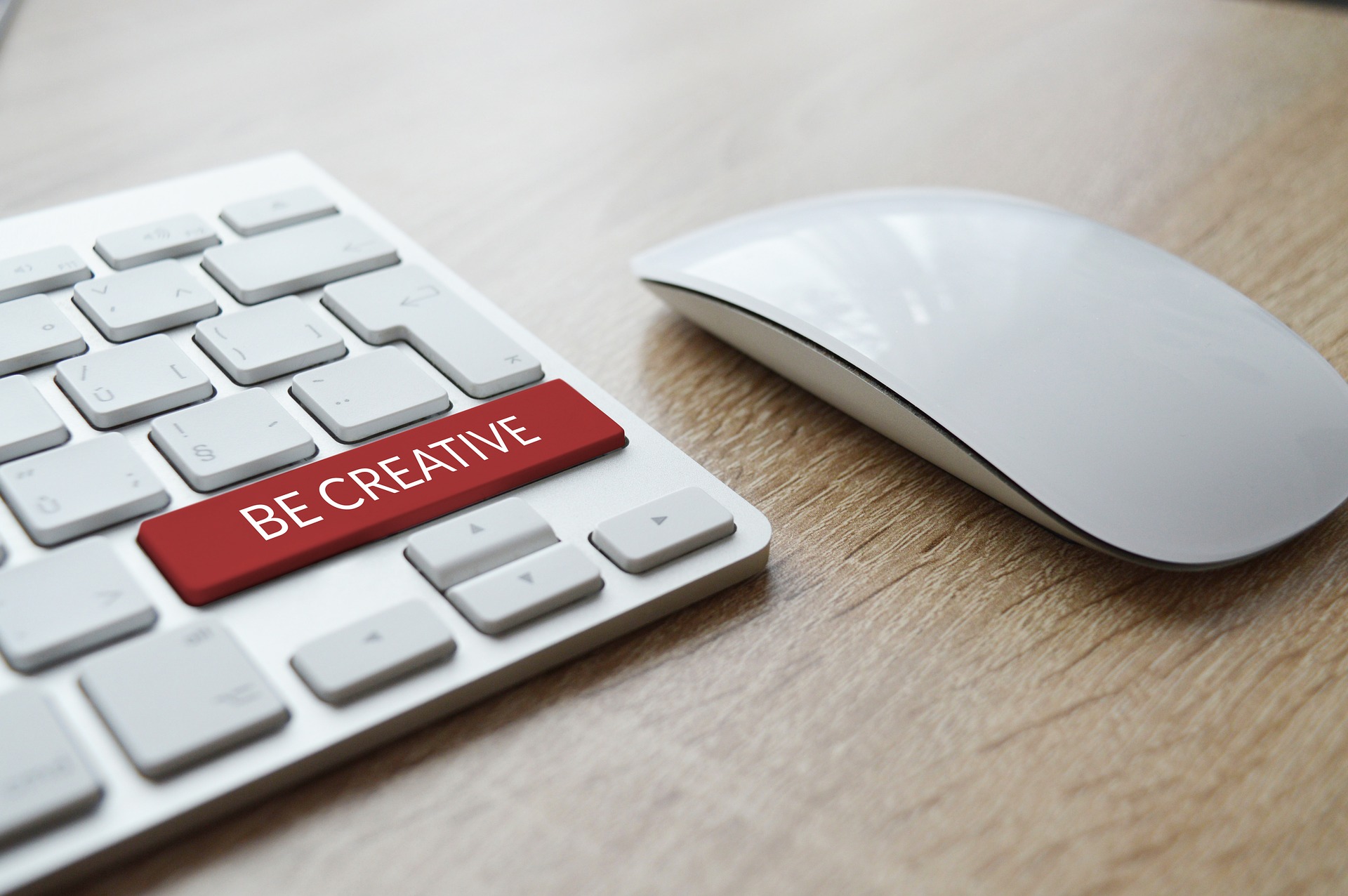As a creative, your success depends on your personal brand. You may very well have the skills to get the job done, but without effective branding, clients won’t trust you.
Develop a personal brand that stands out, become familiar with the client’s needs and set yourself apart from the competition.
“All of us need to understand the importance of branding. We are CEOs of our own companies: Me, Inc. To be in business today, our most important job is to be head marketer for the brand called ‘You’,” says Tom Peters, a well-known author and speaker.
On the road to success, your personal brand drives and you ride shotgun. Here are five ways to get your personal brand heading in the right direction.
 A website example from freelance writer Kaleigh Moore
A website example from freelance writer Kaleigh Moore
1. Deliver on your promises
Above all else, deliver on your promises. You can’t build brand credibility based on words – only actions. Clients have high expectations, so when you commit to certain standards, they will hold you accountable.
Completing your commitments is a sign of professionalism – it shows people you can be trusted. Be mindful of quality when fulfilling your clients’ promises. Subpar work will only diminish your brand’s value. Create a quality control checklist to ensure you’re producing excellent work.
Clients don’t want creatives who deliver good work sometimes. They desire individuals who will provide quality every single time.
Consistency is the ultimate brand-builder. Clients don’t want creatives who deliver good work sometimes. They desire individuals who will provide quality every single time. To remain consistent, never stop improving. Invest time in learning new skills, as well as honing your old ones.
Daniel Bliley, marketing director at Passport says: “Branding today is as much about consistently delivering on your promise as it is about differentiation. You have to position yourself in unique ways in order to stand out from others. You have to meet all of the subconscious expectations and go beyond the mundane to truly impress.”
Differentiate yourself from the competition by understanding your clients’ goals. Learn the reasoning behind their projects. This will help you provide a better work product. Personal branding hinges on you delivering quality work in a consistent manner. Be prepared to make the commitment.
 A tweet from freelance designer and developer Jonnie Hallman, announcing an update about his latest project.
A tweet from freelance designer and developer Jonnie Hallman, announcing an update about his latest project.
2. Build a website or portfolio
Show clients who you are and what you do by creating a website or portfolio to promote your brand. A personal website is an effective tool to give clients an inside perspective. It provides a visual representation of your brand’s values and your work experience.
Develop a website that will showcase your talents. Add case studies about previous clients and mention notable awards and recognitions. And highlight how your work makes a difference. You may even want to include a blog or have prospects sign up for a newsletter. The key is to underline your strengths.
Moreover, focus your website on how you can solve your client’s problems. Leah Kalamakis, founder of The Freelance To Freedom Project, writes: “Don’t use your website to tell people what YOU do, use it to tell people what you can do for THEM.”
Create a website that exudes professionalism and makes a good first impression. Based on eye-tracking research conducted at Missouri University of Science and Technology, “when viewing a website, it takes [visitors] less than two-tenths of a second to form a first impression”. So, avoid adding a multitude of colours, splashed with stock photos. Clients will leave and go to your competitors.
Develop a website worth visiting and give prospective clients a reason to contact you.
 freelancersunion.org
freelancersunion.org
3. Maintain a social media presence
We live in a tech-savvy society. And social media is helping individuals connect with people all over the world. Expand your reach and use social media to gain more exposure for your creative services.“[A] big part of being recognised as a distinctive, successful brand is the ability to reach consumers through multiple channels,” says Forbes contributor Jayson DeMers.
Research where your clients hang out online. Is it Facebook? Twitter? Or, maybe Instagram?
Then, start creating content on those social networks. Follow your clients’ profiles, comment on their posts, and curate helpful information under your account.
A Texas Tech University report found that brands with active social media profiles have more loyal customers. Moreover, brand loyalty is built on a strong social media presence.So, stay active but don’t nag your potential clients. Focus on building a relationship, not earning another work project.
Entrepreneur John Rampton says: “Use social media to converse with industry leaders, such as asking questions, adding your input, sharing their content or signing up for their newsfeeds. This type of networking will continue to improve your credibility and expertise.”
Your online presence matters, so start building connections on social media.
4. Participate in multiple communities
Networking is essential. As a creative, it’s the lifeblood of your operations. People do business with people, not businesses. So aim to build relationships with others.
“When you take the time to build a strong network, that investment will bring results. People start seeing you as an expert and will come to you for services, whether you’re a writer, designer or massage therapist,” says Justine Smith, outreach manager at Freshbooks.
Find networking opportunities in your local area with Meetup.com, or join a Slack community dedicated to your specific industry-related niche. Or try collaborating with fellow freelancers at the Freelancers Union.
If you’re looking to be mentored, offer to mentor someone else. Reciprocity is a powerful professional trait
When joining communities, your goal is to add value. Become a resource to your network. Don’t spam people with ads about your services, instead discover new ways to build partnerships. For example, if you’re a graphic designer, you can partner with a copywriter. Together, you can offer high-quality brochures with impeccable copy and custom-made layouts.
Your networking efforts should centre around leveraging relationships. Personal branding isn’t selfish. You can build a better reputation by helping those around you, so participate in communities by sharing your knowledge. If you’re looking to be mentored, offer to mentor someone else. Reciprocity is a powerful professional trait.
Build a mutually beneficial network. Help first, then ask for guidance.
5. Give your brand personality
Personal branding revolves around perception and everything you do represents your brand. In order to separate yourself from others, give your brand a personality.
Brand personality is defined as “a set of emotional and associative characteristics connected to a company or brand name”. It is how people feel and interact with your freelancing business. For example, Apple exudes innovation. Nike is connected with athleticism. Chick-fil-A is known for pleasurable fast-food experiences.
Link your brand personality with an ideal that your clients can respect.
“People connect to the people and things they believe in,” says Detavio Samuels, president of GlobalHue-Detroit. “So, as a brand, you are either connecting based on showcasing a similar belief system or you are providing them with new beliefs based on a better future they choose to embrace.”
After you select a personality, inject it into everything you do. It is how you interact with people, choose a website design, and even deliver your work product. But don’t force artificial feelings. Your clients will know if you’re faking it, so be genuine with your approach.
So liven up your brand and give it your unique personal flair.
Get noticed
Every creative needs a personal brand that works for them. It will attract clients to your business, in return increasing your revenue.
Create quality work. Build an amazing website (HostGator can help with this part). Interact with clients on social media. Network with leaders in your industry. And develop a brand personality.
Be seen. Be heard. Build your personal brand.








